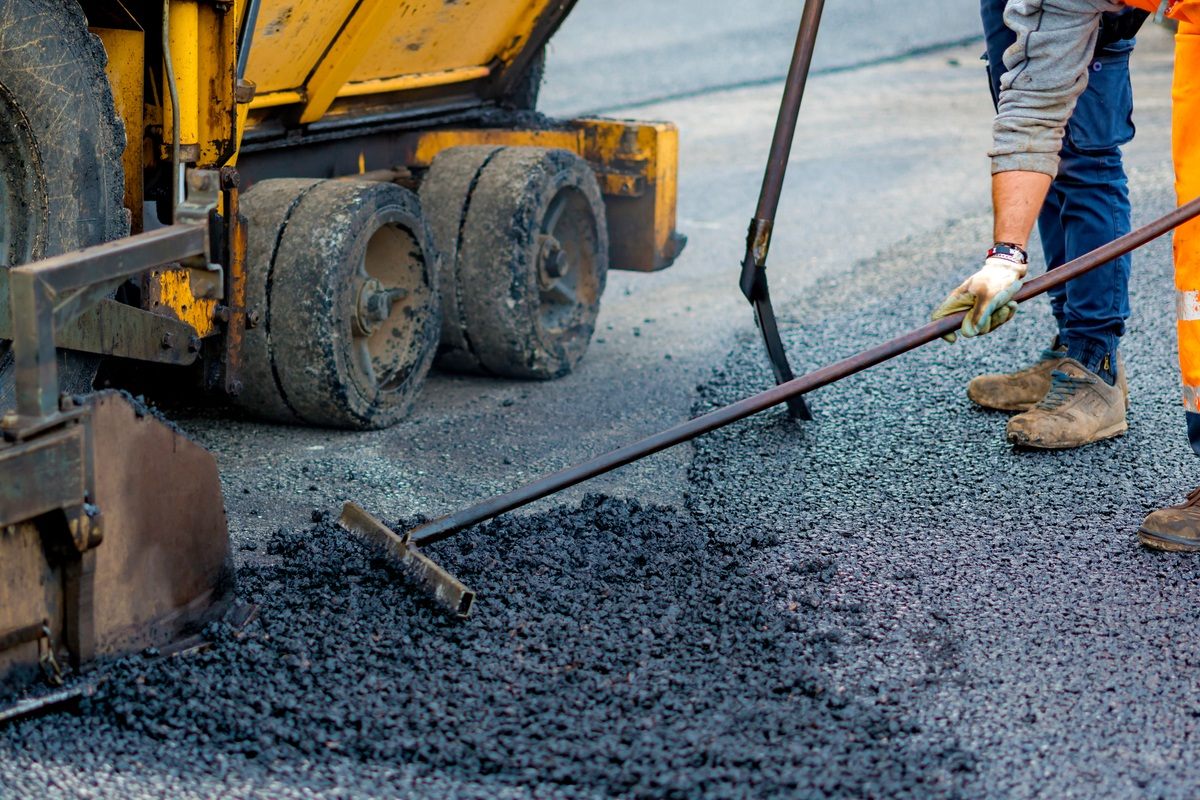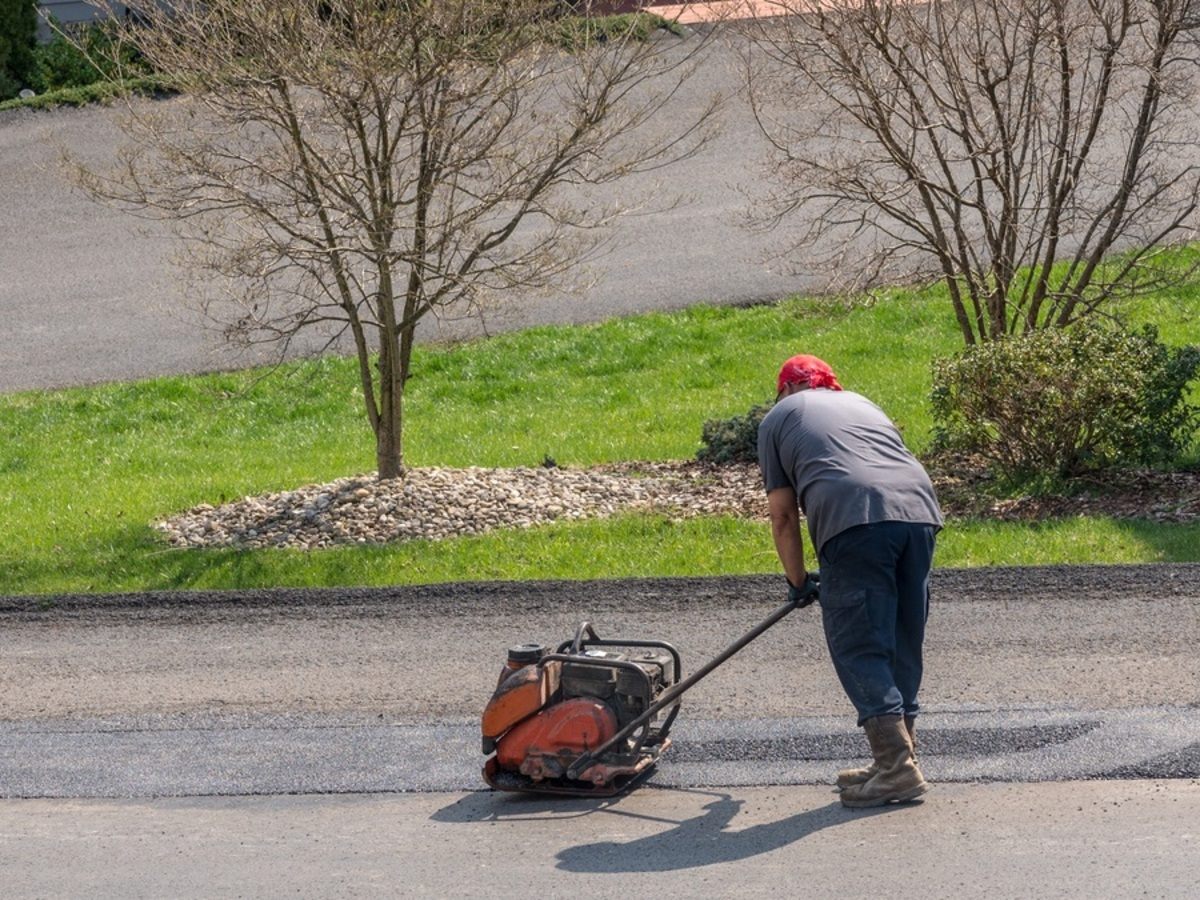When it comes to paving surfaces, many property owners and contractors wonder if they can put asphalt over concrete. The short answer is yes, it is possible. This method is used in many commercial applications, such as airport runways, where a concrete base is capped with asphalt. However, while this approach has benefits, it also has potential downsides that must be considered before deciding.
Why Asphalt Over Concrete Can Work
While it may seem counterintuitive to put a new surface over an old one, installing asphalt over an existing concrete slab can be a viable and cost-effective option in specific situations. When the underlying concrete is in good condition, this approach offers unique benefits for homeowners looking to upgrade their driveway.
Concrete Provides a Strong, Stable Base
One of the main reasons people put asphalt mix over concrete is that concrete is an excellent base material. Unlike other surfaces, concrete is designed to stay in place and resist movement. This makes it a good foundation for asphalt, as the underlying layer remains solid and supportive, a benefit your asphalt driveway contractor will recognize.
For example, airports frequently use this method for runways. First, a concrete base is laid, then covered with an asphalt layer. The asphalt provides a smooth, resurfaced layer that can be easily maintained over time. Airplane landings are less severe on the surface due to the cushioning effect of the concrete layer beneath.
Cost Savings Compared to Full Removal
While concrete driveway services for complete removal and replacement can be expensive, many homeowners and businesses choose to put asphalt over concrete instead to save on demolition and removal costs. By doing so, they get a fresh, new surface without investing in a complete reconstruction of their driveway, parking lot, or other paved areas.
The Problems with Paving Asphalt Over Concrete
While asphalt can be laid over concrete, and might seem like a shortcut, opting for concrete removal before asphalt installation is often the better long-term solution. Here’s why:
Cracks Can Reflect Through
If the concrete beneath has existing cracks or an uneven surface, these imperfections can transfer to the layer above. Asphalt is flexible, which means it adapts to movements in the base material. If the concrete shifts or develops cracks, those imperfections will eventually become visible through the layer above. This phenomenon is referred to as “reflective cracking.”
Risk of Surface Instability
Concrete slabs are often poured in sections with expansion joints in between to allow for movement. Over time, these sections can shift slightly. If asphalt is laid directly over these slabs, those movement points can cause cracks or bumps on the surface. This results in an uneven or damaged asphalt layer much sooner than expected.
Longevity Issues
A key factor in the asphalt driveway installation process is achieving a driveway that lasts 20 years or more with proper techniques. However, as previously noted, directly installing asphalt can compromise this longevity. While the surface may look great initially, cracks and movement can cause early deterioration, leading to costly repairs sooner than anticipated.
When It Makes Sense to Put Asphalt Over Concrete
Despite the potential downsides, there are three scenarios where applying blacktop over concrete can work well:
1. The Concrete Base Is in Good Condition
If the existing concrete is structurally sound, with no significant cracks, settling, or instability, it can serve as a good base for asphalt. In these cases, adding a layer of asphalt may extend the life of the pavement without significant issues.
2. Proper Preparation and Reinforcement Are Used
To minimize reflective cracking, contractors may apply a reinforcing layer or a fabric membrane between these mixes. This helps prevent cracks from transferring through the asphalt surface, improving durability.
3. The Alternative Is Cost-Prohibitive
In cases where removing the concrete and replacing it with a fresh gravel base is too expensive, paving asphalt over the existing concrete can be a reasonable compromise. While not ideal, it still provides a refreshed, usable surface for a fraction of the cost.
Don’t Risk Pavement Failure. Get a Professional Assessment Today!

So, can you put asphalt mix over concrete? Yes, it can be done; in some cases, it may be a cost-effective solution. However, it comes with risks such as reflective cracking and surface instability, leading to shorter pavement life. To improve results, it’s crucial to understand how asphalt milling works. Milling can help create a smoother transition and better bonding between the layers. If you are considering this approach, ensure that the concrete base is in good condition and take steps to reinforce the asphalt layer.
Proper asphalt installation with a well-prepared base remains the superior choice for the best long-term results. If you’re unsure which option is best for your property, consulting an experienced paving contractor can help you decide your needs. Contact Richfield Blacktop today.









